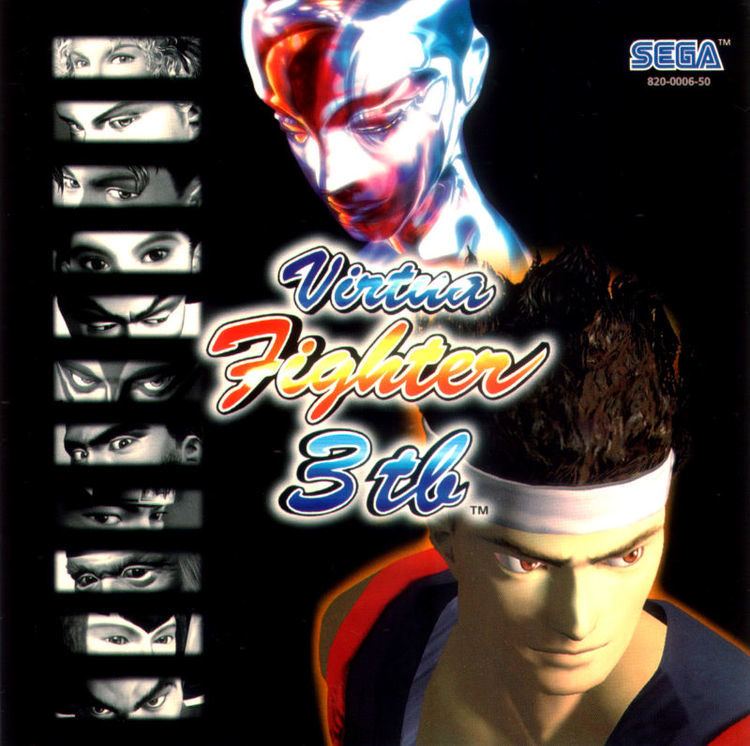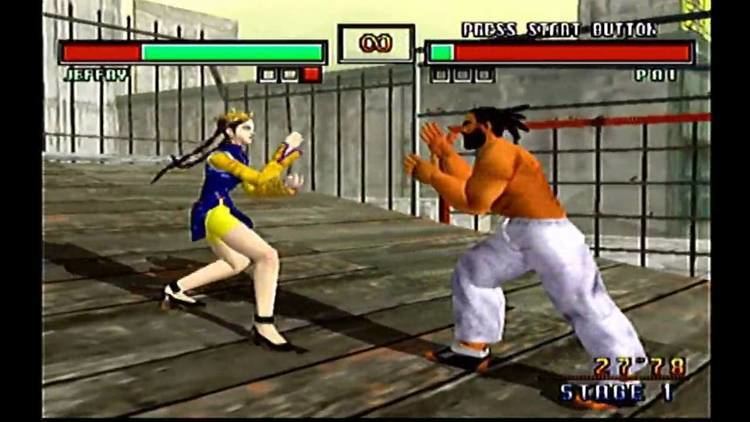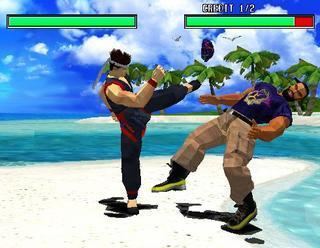8.4 /10 2 Votes
8.7/10 IGN Programmer(s) Tetsuya Kaku Cabinet Upright | 4.5/5 Emuparadise Designer(s) Kazuhiro Izaki Initial release date 26 July 1996 Arcade system Model3 Step1.0 | |||||||||||||||||||||||||||||||||
 | ||||||||||||||||||||||||||||||||||
Director(s) Yu SuzukiDaichi Katagiri Composer(s) Takenobu MitsuyoshiFumio ItoHidenori Syoji Similar Virtua Fighter 2, Virtua Fighter 4, Virtua Fighter, Virtua Fighter 5, Virtua Fighter Kids | ||||||||||||||||||||||||||||||||||
Virtua Fighter 3 (Japanese: バーチャファイター3, Hepburn: Bācha Faitā Surī) is the third fighting game in the Virtua Fighter series, developed by Sega AM2 and published by Sega in 1996. It was the first arcade game to run on the Sega Model 3 system board. A port for the Sega Saturn was announced but ultimately cancelled. However, the game eventually reached home consoles in the form of a conversion for the Dreamcast.
Contents
- Virtua fighter 3tb arcade vs dreamcast side by side comparison i vc decide
- Gameplay
- Characters
- History
- Virtua Fighter 3tb
- Reception
- References
Virtua fighter 3tb arcade vs dreamcast side by side comparison i vc decide
Gameplay

This iteration is the first in the series to have undulation in the stages, such as a staircase in the Great Wall stage, a stage set on top of a sloping roof and a raft constructed of individually moving elements on a bobbing water surface.

A fourth button, the Dodge, was added (the series had previously used only three - Kick, Punch and Guard). Pressing the button with the joystick in neutral or held up makes the character move into the screen (i.e. away from the viewer), while pressing the button with the joystick held down makes the character move out of the screen (i.e. towards the viewer). This 'evasion' technique enables players to dodge incoming attacks, creating opportunities to counter-attack almost immediately.
Characters
Returning characters are: Akira Yuki, Pai Chan, Lau Chan, Wolf Hawkfield, Jeffry McWild, Kage-Maru, Sarah Bryant, Jacky Bryant, Shun Di, Lion Rafale, Dural. Two new Japanese characters were added to the roster of fighters: Aoi Umenokoji, a beautiful Japanese woman and a childhood friend of Akira Yuki who used a nimble form of aiki-jujutsu as her fighting style of choice, and Taka-Arashi, a sumo wrestler from Japan.
Taka Arashi would not make another appearance in the Virtua Fighter series untilVirtua Fighter 5 R; the series' producer Hiroshi Kataoka explained that the removal of Taka in subsequent installments was due to the technical implications of having a substantially larger character. Taka had in fact nearly been cut from Virtua Fighter 3 due to difficulties with his jumping moves.
History
Virtua Fighter 3 was the launch title for the arcade board Model 3 from Sega. Developed by Yu Suzuki's Sega AM2, it was a revolutionary game from a technical standpoint, with its detailed graphics earning widespread praise. Characters' eyes appeared to track the opponent's position, their muscles could flex and relax, and the fighting arenas featured stairs and slopes. The game also introduced the ability to move in three dimensions to the series with the dodge move, a feature that was apparently added fairly late in development, as Suzuki said in an interview held during the third quarter of 1995: "The fact that the game is 2D from the player's perspective probably won't change in VF3. If the viewpoint changes rapidly during gameplay, the player can't concentrate on the game, and it's difficult to keep up with the situation your character is in, as in [Battle Arena Toshinden]." In addition, he stated later in the same interview that he intended to keep Virtua Figher 3 a three-button game like its predecessors.
The game was unveiled at Tokyo's AOU show in February 1996. Sega displayed non-playable demos of Lau Chan, Dural, and new character Aoi Umenokoji, who was unveiled for the first time at the show. However, Dural, the robotic final boss, garnered the most attention, due to being made of a metallic surface that reflected the surrounding environment. A playable demo with just two characters, Jacky Bryant and Dural, was shown to a select handful of individuals at the show. Computer and Video Games described the game's demo, also shown at Miami's ACME show in early March 1996, as "the most astounding display of video game graphic muscle ever in the history of this industry."
Yu Suzuki announced a Sega Saturn port at a late 1996 press conference (the same conference at which Fighters Megamix was unveiled), elaborating that AM2 research had been studying Virtua Fighter 3 for the past few months and had at last determined that it was possible to create a Saturn port comparable to the arcade version. To facilitate the conversion, AM2's Research and Development labs spent some months working on a "3D accelerator cartridge" for the Saturn, but the cartridge was canceled for undisclosed reasons. Sega officials nonetheless stated that Virtua Fighter 3 would be ported to the Saturn with or without the upgrade cartridge.
Virtua Fighter 3tb
(Team Battle) is an update version of Virtua Fighter 3, that featured battles between teams of various fighters, one after another is defeated. This "team battle" version was later released on Sega's Dreamcast console, being one of its launch games, becoming one of the best-selling Dreamcast games in Japan. Virtua Fighter 3 was intended to be a launch title for the Dreamcast in North America, but it was delayed. Although it did eventually come to North America, it wasn't nearly as successful as it was in Japan.
Reception
Virtua Fighter 3 has received positive reviews from critics. Computer and Video Games reviewed the arcade version in its November 1996 issue and declared that it "is the best 3D fighting game ever." AllGame's Brett Alan Weiss reviewed the arcade version and scored it 4.5 out of 5 stars, concluding that it is a "deep game with a cinematic look and virtually limitless replay value". The 5th GameFan Megawards of 1996 gave Virtua Fighter 3 the award for Coin-Op Game of the Year. The 10th Gamest Awards gave it the award for Best Graphics of 1996, and it placed fourth place for overall Game of the Year and fifth place for Best Fighting Game.
Edge reviewed the Dreamcast version and gave it an 8/10, stating "Bouts take place atop sloping downtown rooftops and on flights of steps, in the lapping waters of a desert island and on the Great Wall of China...But Virtua Fighter has grown into a highly technical game since the inception of the series in 1993, resulting in the uneven floors of the third game affecting the movement and attacks of the characters...Where once Tekken's approachable 'one button for each limb' system seemed the way forward for the genre, it limits interaction in a true three-dimensional space. VF's alternative, with buttons for punch, kick, defend and dodge, while perhaps not offering the same scope for multiple attack movements, allows you to control the characters with unrivalled grace." GameSpot's James Mielke praised the Dreamcast version, awarding it 8.2/10, saying "Virtua Fighter fans will find all they need neatly wrapped in this package". Allgame's Cal Nguyen, however, compared the Dreamcast version unfavorably with Soul Calibur.
In the arcades, the game was very successful, to the point where the profits from this game and Virtua Fighter 4 helped recoup the losses Sega received from the commercial failure of Shenmue.
